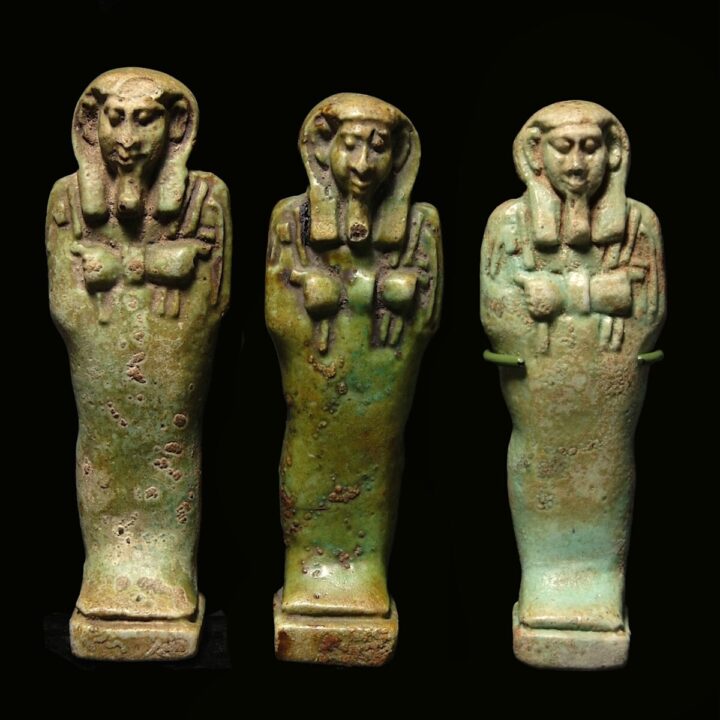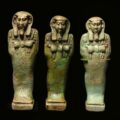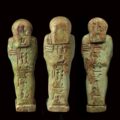Three Faience Shabtis of Pefheryhes
Culture: Egyptian
Period: Late period, early 26th dynasty, around 664 B.C.
Material: Faience
Dimensions: 11.1 cm; 10.8 cm; 10.9 cm (heights)
Price: Sold
Ref: 1458
Provenance: The two shabtis on the same base come from a French private collection, acquired 1960s to 1980s, due to the old mounting. The third shabti comes from an old German collection in Düren, North Rhine-Westphalia before 1983.
Condition: Except for some insignificant, minor wear, all three shabtis are intact.
Description: Three belonging, interesting faience shabtis from the tomb of Pefheryhes, son of Djeder. The bodies in mummiform with arms crossed in front of the chests. In the left hand each figure holds the pick, in the right hand the plow and the cord of the seed bag, which hangs over the left shoulder. The figures stand on plinths and lean on the back pillars, which depict a vertical inscription with hieroglyphs. The details of the face are almost zoomorphic and remind of a monkey. The large ears look out from the tripartite wig, the false beard is braided. The inscription reads the name of the owner and his father. Striking is that on the two smaller shabtis the inscription already starts on the wig, on the larger one below the wig. Two shabtis are mounted together on an old wood base, the third one is from an old German collection and is separately mounted. See four published shabtis of Pefheryhes in the catalogue of the "Musée de Picardie", Amiens, page 90, numbers 150-153. More examples are in the Allard Pierson Museum in Amsterdam with the inventory number 8721, in the Louvre in Paris with the inventory number E 10210, as well as in the National Museum in Krakow with the inventory number 906, published in H. A. Schlögl, Corpus der Ägyptischen Totenfiguren in den öffentlichen Sammlungen Krakaus (2000) p. 91 no. 51.





